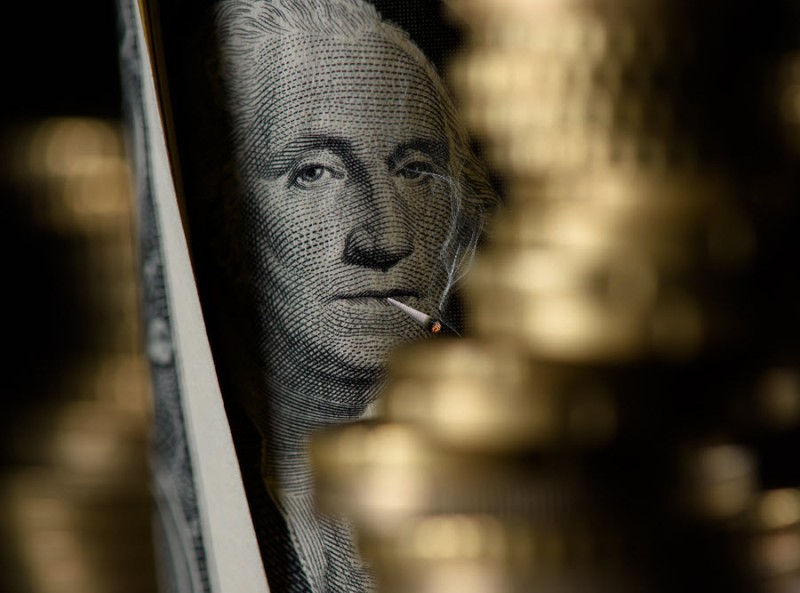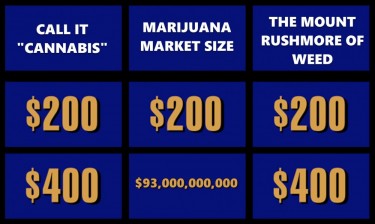Gary Allen, CEO of New Frontier Data, announced the release of the 2023 U.S. Cannabis Report: Market Updates & Projections, which provides insights into the current and future state of the American cannabis market. The report is sponsored by Cannacare Docs and includes information on sales, consumers, supply, and pricing for both adult-use and medical cannabis. Allen predicts a promising future for the industry, citing the emergence of new markets to offset the stabilization of established ones.
According to New Frontier Data's estimates, even with a potential slowdown in new market growth, the industry can expect a healthy compound annual growth rate of nine percent through 2030. In fact, with nine states currently pursuing adult-use legalization and nine more looking to legalize medical cannabis, the market growth could be even more robust.
Cannabis Industry Sales Growth Projections
In 2022, strong consumer demand in the latest operational, legal state markets fueled annual legal cannabis sales in the U.S. to an approximate total of $30 billion. These states are projected to experience growth in yearly sales, with estimates exceeding $35 billion in 2023. If state-level legalization efforts continue to outpace federal policy reform, sales are projected to reach a whopping $71 billion by 2030 with a compound annual growth rate of 12%.
The legal cannabis industry in the U.S. is experiencing significant growth due to several converging factors. Firstly, new legal revenues are generated by state markets that have recently reformed their cannabis laws and established retail markets for high-THC products. Secondly, there is sustained demand growth in legal states as consumers switch from unregulated to legal sources.
Lastly, there is an overall increase in cannabis consumption throughout the country as more people recognize the therapeutic benefits of cannabis, and usage becomes more normalized and destigmatized. Additionally, as cannabis is diversified for more medical and wellness uses, it further contributes to the industry's growth.
The regulatory structure in each market has been a critical driver of size and growth for the legal cannabis industry in states that have legalized adult use on top of an existing medical cannabis program. Some of the crucial distinctions that have had the most significant impact on sales in the legal market include the chosen integration approach for retail access, the availability and accessibility of retail outlets, and the maturity level of the existing medical market.
Additionally, effective tax differences between medical and adult-use programs, ease of entry for new participants in medical markets, and product type restrictions between markets are all factors that can impact sales. Lastly, home cultivation/caregiver laws also play a role in the overall success of the legal cannabis industry.
The Growing U.S. Cannabis Consumer Base
By 2023, legal and unregulated markets are expected to have around 54 million U.S. adults consuming cannabis at least once. This figure is projected to increase by approximately 4% annually for the next eight years, with an estimated 69 million U.S. consumers by 2030.
It is worth noting that among the top 10 states with the highest number of cannabis consumers, Ohio, Florida, and Pennsylvania are expected to legalize adult-use markets soon. Moreover, North Carolina and Texas could potentially approve full medical programs by 2025, highlighting the significant market opportunities in these states despite current restrictions on cannabis.
Apart from Washington D.C., where possession and use of cannabis for adult use are legal, but there is no legal marketplace or sale, all the states with the highest density of cannabis consumers have operational adult-use markets. As such, there is tremendous potential for legal cannabis to expand into more large consumer markets in the coming years.
Increased Competition, Oversupply, and Falling Prices
Newly legal state cannabis markets saw an influx of dollars, pushing total cannabis sales to almost $30 billion in 2022. However, the most established adult-use markets in the country faced stiff regional competition, oversupply, and declining prices throughout the year. For the first time since their legalization in 2014, Washington and Colorado both experienced a drop in annual sales, and the three oldest legal cannabis state markets had double-digit sales declines year-over-year from 2021.
Competition in the market, caused by the activation of a new legal market within a dual legal state market as the new adult-use market competes with the existing medical one and between a state's illicit and legal markets, creates downward pressure on cannabis prices. The speed of the price decline is influenced by the market's regulatory structure, with prices generally declining more slowly in limited license markets than in unlimited license markets and more slowly in medical markets than in adult-use markets.
The effects on the cannabis market are not solely determined by market competition and regulatory structure. Other factors, such as the speed of retail outlet openings following legalization, state tax rates, and the quality and diversity of products available, also play a significant role.
Expanding Legalization and the Erosion of the Illicit Market
By 2030, it is expected that about 69 million adults in the U.S. will consume cannabis at least once per year, buying from both illegal and legal markets. Even with solid sales in legal state markets amounting to a combined $30 billion in 2022, most U.S. cannabis demand is still being met by the illicit market, with an estimated $76 billion spent on illegal sources across the country in 2022
North Carolina, Texas, and Georgia are the three largest illicit cannabis markets among states without legal medical or adult-use sales. These unregulated markets are estimated to have generated a combined $12.1 billion in 2022 and are projected to reach $18 billion by 2030 if cannabis remains illegal.
However, legalization efforts have successfully disrupted illicit markets, and legal medical and adult-use needs are increasingly expected to meet demand previously served by illegal sources. In 2022, 28% of U.S. cannabis sales were from legal channels, but by 2030, it's expected to reach 48%. If all 18 potential markets legalize within their expected timelines, the legal market could meet almost 60% of the total cannabis demand by 2030.
Conclusion
The cannabis market in the US is expanding and changing as more people become interested in it and it becomes legal in more states. While the illicit market currently dominates, the trend toward legalization is upsetting the criminal economy and contributing to the rising demand for legal cannabis.
Cannabis legalization will increase market share as additional states legalize it, potentially reaching 60% of global demand by 2030. The legal cannabis industry has a promising future overall, but issues such as regulatory barriers, regional competition, and oversupply remain to be resolved.








